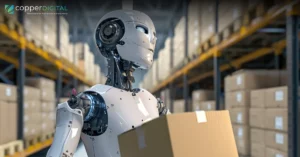The last couple of years have seen a lot of dynamic activity in the logistics and transportation industry. We witnessed multiple trends on a global level. From traditional supply chains being fragmented into smaller manageable parts to the rise of on-demand delivery services, the logistics industry has been on a roll! However, we believe the next decade is going to overshadow these trends and grow multiple folds.
There is a real possibility of fleets becoming totally autonomous as well as Trucks platooning and autonomous trucks could be a reality by 2030. Semi-autonomous trucks will reach a penetration rate of 5 percent by 2030. Rolls Royce has announced plans to launch autonomous cargo ships (or as the Economist called it, “Ghost Ships” ) by 2030. While replacing or aiding man was a critical criterion for logistics and autonomous technology in material handling, for fleets, the value of autonomy centers around fuel economy. However, fuel is still the most overbearing influence on the assets and fleets of the industry, with all this autonomy, a new influence is emerging that could have a far-reaching impact on the supply chain.
With customers demanding cheap, green, and fast supply chains, the incumbent logistics companies look for ways to create unique value propositions. Some major industrial customers still want the comfort of dealing with one logistics partner, yet they look at new ways of partnering.
Implications for The Logistics Industry

As networks become more fully shared, companies will focus their competitive edge on customer expectations. Companies that can build on a strong brand profile from improved margins, by partnering with other firms to cover less profitable delivery routes. National posts, on the other hand, may struggle as they are forced to cover these routes and lose volume in more profitable regions.
Sea freight and trucking companies are likely to benefit the most from the new ‘PI’ standards, which make it easier to fully use their capacity, and increased profitability is likely to reduce the pressure for consolidation in this sector. Warehousing will benefit from cost efficiencies too, as automated loading and picking systems based on ‘PI’ standards are implemented. CyberSecurity will be a crucial issue for companies that shift to new data standards and greater data sharing.
The competitive landscape changes markedly here. Online retailers expand their own logistics offerings. In some cases, this reduces their use of external providers but doesn’t replace it entirely.
Rise of mobility as a service
Others use their own sophisticated analysis of customer data to increase logistics efficiency substantially. In order to fully use their capacity, players like the large grocery chains and big-box retailers begin offering their own logistics services and look to combine their brick-and-mortar and online supply chains. Streaming services, such as Netflix, have fundamentally changed the way people search for, consume, and pay for media. Transportation now stands at a similar frontier.
Ticketless public transit

In the United Kingdom, transit riders can use the Ticketless mobile-ticketing platform to move from one point to another with minimal friction.11 UrbanThings, the company behind Ticketless, will soon launch a pilot of the “Be-in/Be-Out” system, in which the traveler’s Ticketless app will communicate via Bluetooth to track their journey and manage fare collection without them having to take their phone out, providing a no-stop travel experience.
The biggest benefit of embracing mobile apps for the logistics industry is the real-time data available to both the client and carrier company. Mobile apps provide a plethora of information available at the fingertips of decision makers in the logistics industry. This further adds to the efficiency brought about by the adoption of mobile technology in the industry as a whole. In all, the next decade for logistics and transportation will clearly smash the last ten.



